Einführung
Selecting the right hydraulic rotary drilling rig for your project is crucial to achieving optimal performance, efficiency, and cost-effectiveness. With numerous options available in the market, it can be challenging to determine which rig best suits your specific needs. This comprehensive guide will help you understand the key factors to consider when choosing a hydraulic rotary drilling rig, its applications, benefits, and maintenance tips. By the end of this article, you’ll be equipped with the knowledge to make an informed decision and maximize the potential of your drilling operations.
Understanding Hydraulic Rotary Drilling Rigs
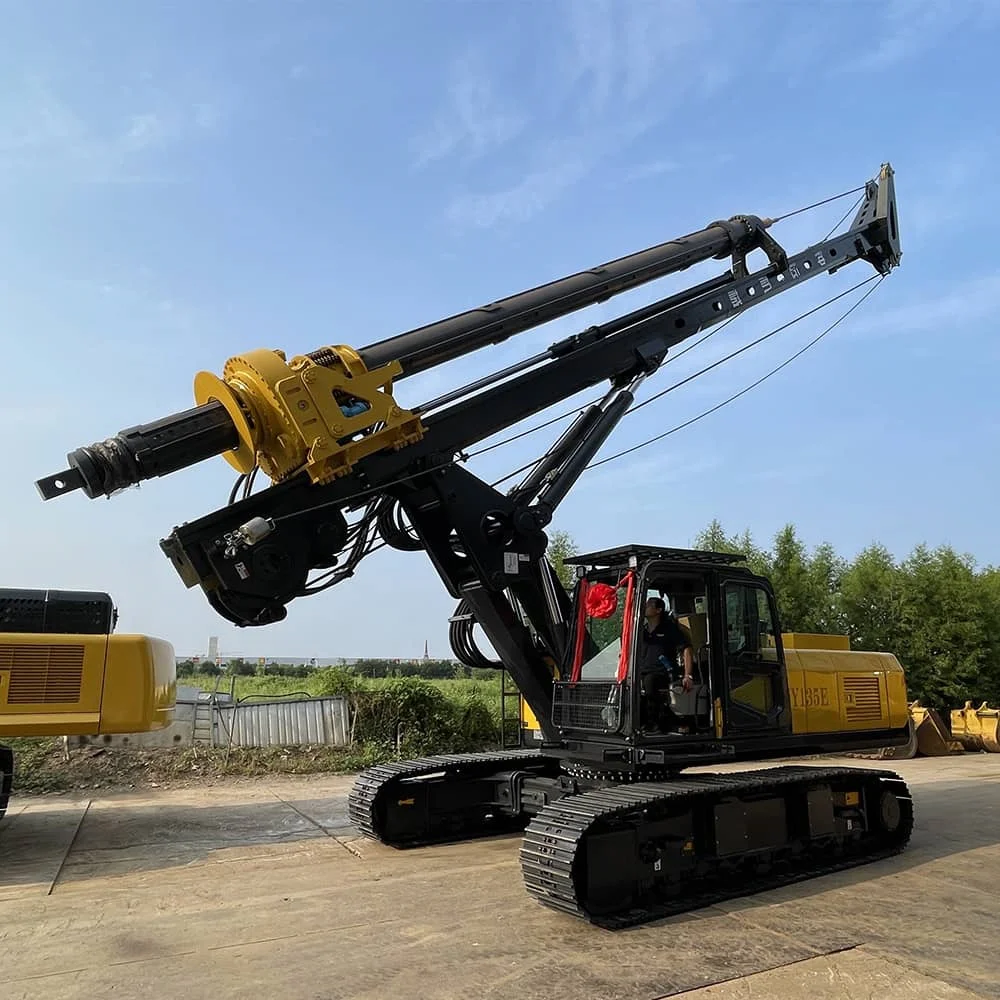
What is a Hydraulic Rotary Drilling Rig?
A hydraulic rotary drilling rig is a piece of heavy equipment used for drilling holes into the earth’s surface. It uses hydraulic power to rotate the drill bit and apply downward force, making it effective for various drilling applications, including oil and gas exploration, geothermal drilling, and construction projects.
Key Components of a Hydraulic Rotary Drilling Rig
- Drill Bit: The cutting tool that penetrates the ground.
- Rotary Table: Provides rotational force to the drill string.
- Hydraulic System: Powers the rotation and movement of the drill.
- Mast: Supports the drill string and provides vertical movement.
- Mud Pump: Circulates drilling fluid to cool the bit and remove cuttings.
- Control Panel: Allows operators to manage and monitor drilling operations.
Wichtige Faktoren, die bei der Auswahl eines berücksichtigt werden sollten Hydraulic Rotary Drilling Rig
Projektanforderungen
Depth and Diameter of Drilling
The required depth and diameter of the boreholes are critical factors in selecting a hydraulic rotary drilling rig. Ensure the rig can handle the specific dimensions needed for your project.
| Project Type | Typical Depth (m) | Typical Diameter (mm) |
|---|---|---|
| Oil and Gas Exploration | 1000 – 5000 | 150 – 300 |
| Geothermal Drilling | 100 – 3000 | 100 – 250 |
| Water Well Drilling | 30 – 300 | 100 – 200 |
| Construction Foundations | 10 – 100 | 500 – 1500 |
Geology and Soil Conditions
Understanding the geology and soil conditions of the drilling site is essential. Different rigs are designed to handle various soil types, from soft clay to hard rock. Choose a rig that is compatible with the specific geological conditions of your site.
Power and Performance
Hydraulic Power
The hydraulic power of the rig determines its drilling speed and efficiency. Higher hydraulic power is necessary for deeper and more challenging drilling conditions. Evaluate the rig’s hydraulic system to ensure it meets your project’s demands.
Rotational Speed and Torque
The rotational speed and torque of the drill bit affect the rig’s drilling capability. High torque is essential for penetrating hard formations, while adjustable rotational speed allows for better control in different soil conditions.
Mobility and Portability
Consider the mobility and portability of the drilling rig, especially if your project involves multiple drilling sites. Compact and lightweight rigs are easier to transport and set up, saving time and reducing operational costs.
Sicherheitsvorrichtungen
Safety is paramount in drilling operations. Look for rigs equipped with advanced safety features such as emergency shut-off systems, automatic pipe handling, and robust guarding around moving parts.
Cost and Budget
Evaluate the cost of the drilling rig, including initial purchase price, maintenance, and operational expenses. While it may be tempting to opt for a cheaper rig, consider the long-term benefits of investing in a high-quality, reliable machine.
Types of Hydraulic Rotary Drilling Rigs
Crawler-Mounted Drilling Rigs
Overview
Crawler-mounted rigs are equipped with tracks that allow them to move easily over rough terrain. They are ideal for projects in remote or challenging locations where mobility is crucial.
Key Features
- High Mobility: Can navigate uneven and rugged terrain.
- Stability: Tracks provide a stable platform for drilling operations.
- Vielseitigkeit: Suitable for various drilling applications.
Truck-Mounted Drilling Rigs
Overview
Truck-mounted rigs are mounted on a truck chassis, making them highly portable and easy to transport between sites. They are commonly used for water well drilling and other projects that require frequent relocation.
Key Features
- Portability: Easy to transport over long distances.
- Quick Setup: Can be rapidly deployed and set up at the drilling site.
- Compact Design: Takes up less space compared to other rigs.
Trailer-Mounted Drilling Rigs
Overview
Trailer-mounted rigs are mounted on trailers, offering a balance between mobility and stability. They are suitable for projects that require a moderate level of portability.
Key Features
- Moderate Mobility: Easier to transport than crawler-mounted rigs.
- Stability: Provides a stable drilling platform.
- Cost-Effective: Often less expensive than truck-mounted rigs.
Applications of Hydraulic Rotary Drilling Rigs
Oil and Gas Exploration
Hydraulic rotary drilling rigs are extensively used in oil and gas exploration to drill deep boreholes for extracting hydrocarbons. Their ability to handle various geological conditions makes them ideal for this application.
Geothermal Drilling
Geothermal drilling requires precise and efficient rigs to access geothermal reservoirs. Hydraulic rotary drilling rigs provide the necessary power and control to drill deep wells for geothermal energy production.
Water Well Drilling
Water well drilling involves creating boreholes to access underground water sources. Hydraulic rotary drilling rigs are preferred for their ability to drill quickly and efficiently, ensuring a reliable water supply.
Construction Foundations
In construction, hydraulic rotary drilling rigs are used to create deep foundations for buildings and infrastructure. They can drill large-diameter holes and provide the necessary support for heavy structures.
Maintenance Tips for Hydraulic Rotary Drilling Rigs

Regelmäßige Inspektionen
Conduct regular inspections of the drilling rig to identify any signs of wear or damage. Check critical components such as the hydraulic system, drill bit, and rotary table for any issues.
Fluid Checks and Replacements
Regularly check and replace hydraulic fluid, lubricants, and other essential fluids. Clean fluids ensure the smooth operation of the rig and prevent damage to hydraulic components.
Component Maintenance
Maintain key components such as the drill bit, rotary table, and mast. Replace worn-out parts to ensure optimal performance and prevent breakdowns.
Safety Checks
Perform routine safety checks to ensure all safety features are functioning correctly. Regularly test emergency shut-off systems and inspect guarding around moving parts.
Abschluss
Choosing the best hydraulic rotary drilling rig for your needs requires careful consideration of several factors, including project requirements, geological conditions, power and performance, mobility, safety features, and budget. By understanding these factors and evaluating different types of rigs, you can make an informed decision that enhances the efficiency and success of your drilling operations. Whether you are involved in oil and gas exploration, geothermal drilling, water well drilling, or construction, selecting the right hydraulic rotary drilling rig is crucial to achieving optimal results.
FAQ
What are the main types of hydraulic rotary drilling rigs?
The main types of hydraulic rotary drilling rigs include crawler-mounted rigs, truck-mounted rigs, and trailer-mounted rigs. Each type offers unique features and benefits, making them suitable for different drilling applications.
How do I choose the right hydraulic rotary drilling rig for my project?
Consider factors such as project requirements, geology and soil conditions, hydraulic power, mobility, safety features, and budget. Evaluate these factors to select a rig that meets your specific needs.
What are the key components of a hydraulic rotary drilling rig?
Key components of a hydraulic rotary drilling rig include the drill bit, rotary table, hydraulic system, mast, mud pump, and control panel. Each component plays a crucial role in the rig’s performance and efficiency.
How often should I perform maintenance on my hydraulic rotary drilling rig?
Regular maintenance should be performed according to the manufacturer’s recommendations. This includes routine inspections, fluid checks and replacements, component maintenance, and safety checks.
What are the common applications of hydraulic rotary drilling rigs?
Common applications of hydraulic rotary drilling rigs include oil and gas exploration, geothermal drilling, water well drilling, and construction foundations. Their versatility and power make them suitable for various drilling tasks.

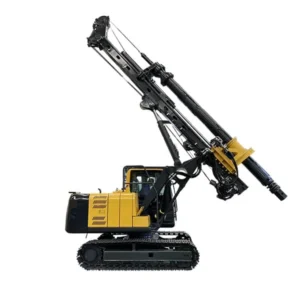
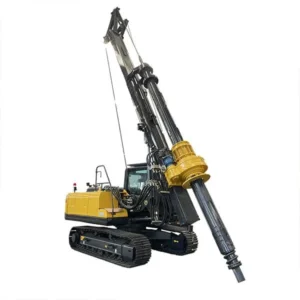
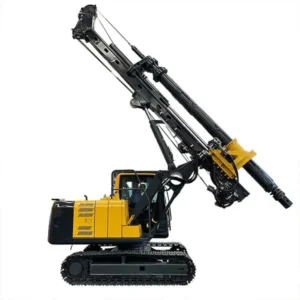



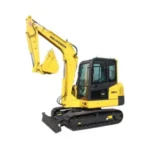

-150x150.webp)
